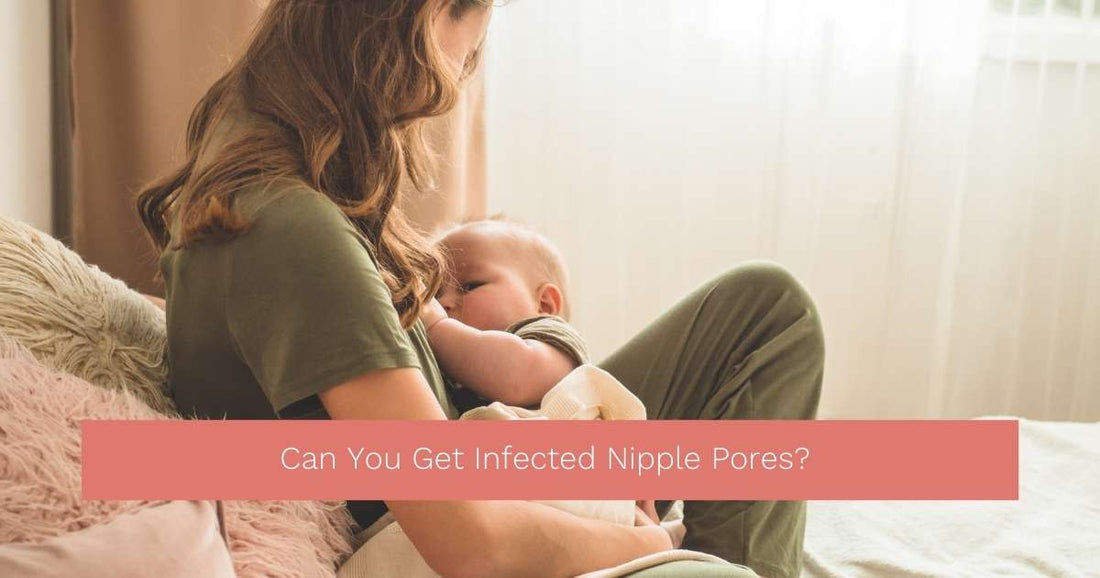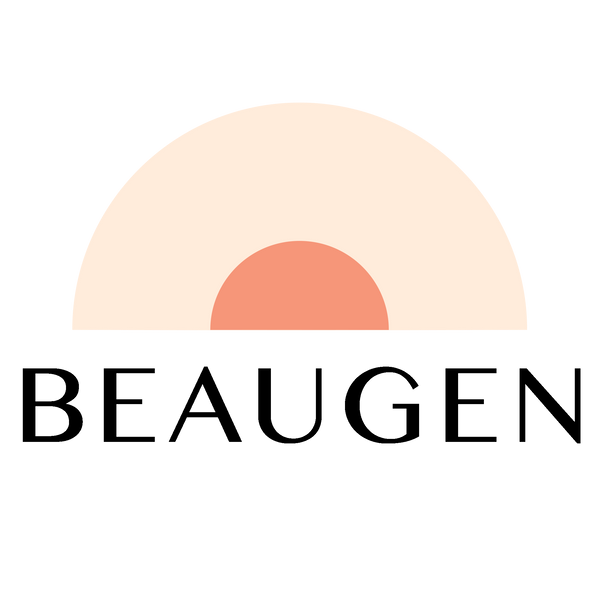Can You Get Infected Nipple Pores?
Mommy Care Team
Nipple tissue is skin. Just like the skin on your face, your nipple tissue is susceptible to blocked pores. This might have you wondering if you can then get infected nipple pores. The answer is yes. The good news is that they are treatable and can often be treated at home before requiring professional help. Let’s dive into this a bit more.
How Do Nipple Pores Become Infected?
Blocked or infected nipple pores happen. These are sometimes called milk blebs. Just like acne can happen even if you keep your face super clean. Like regular pimples, they can be a result of hormones, the bacteria in your baby’s mouth, normal everyday sweat, and dried breast milk. Yup! Even your breast milk, the act of breastfeeding can cause blocked or infected nipple pores.
If your baby has trouble latching, and nursing, it may lead to plugged nipple pores. This can be due to weak facial muscles, tongue or lip ties. If you are unable to pump or nurse for a length of time this can also cause milk to build up and block your pores. Tight clothing can also cause blockages. Generally, these start as a blocked pore. You might notice a new bump either the same color as your skin or it might be white in color.
What Else Could They Be?
Not all white spots on your nipple tissue are blocked pores. As your hormones change during pregnancy and breastfeeding you might notice a bunch of white spots. This waxy material is your body’s way of protecting against infection. Clearing these spots might actually cause infection. You can learn more here in this article on Montgomery Tubercles.
Infected pores are not the same as an infected nipple. Infected Nipples may be a yeast infection, thrush or something similar that requires an anti-fungal treatment and should be seen by a medical professional.
Friction blisters can also present as painful bumps on your nipple. These often affect pumping moms. Some friction blisters can be very painful and affect a mom’s ability to nurse or pump and should be consulted by a professional.
How Do You Treat Them?
Blocked pores may be resolved by nursing or pumping. The suction may remove the blockage and no further treatment is required. If these spots do not resolve on their own, or become infected nipple pores, there are a few things you can do.
First, gently clean the affected area. If this area is painful you may want to seek a lactation professional or consult your healthcare provider. Additionally you can try soaking the breast in warm water with a little bit of dissolved epsom salt. Another method is to apply moist heat. Try soaking a washcloth in hot or warm water and applying it to the breast.
Allowing your skin the room to breathe can also help promote healing. If you can, not wearing a bra or wearing loose fitting clothing often helps reduce the time it takes a clogged pore, blister, or other irritation to resolve.
Do I Need to Stop Feeding my Baby?
Feeding your baby is not only safe, but it helps to treat and avoid future blockages. Nursing or pumping moms should continue your normal routine. If your baby is not feeding as frequently, for example sleeping longer, you may consider adding a pump session.
If you have concerns over the safety of your breast milk or tissue consult a lactation or healthcare provider. They can answer any questions you have with a simple examination and offer up more tailored advice.
What Can I Do for Pain?
Nipple pain is no joke. Whether it’s a blocked pore or a friction blister, a sore nipple can be very distracting at best. Breast shells can keep clothing from sticking to or rubbing against the irritated skin. These also make using a healing balm or salve like coconut oil easier as the moisture from these tend to cause fabric to stick. Cooling gel packs or clean washcloths soaked in cool water can help to alleviate pain in between nursing or pumping sessions.
